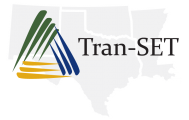Document Type
Report
Publication Date
8-1-2019
Abstract
Automated and timely road pavement damage inspection is critical to the preventive maintenance and the long-term sustainability and resilience of roads in Region 6. Current road inspection practices rely heavily on a manual process. Sensor-based methods (e.g., LiDAR scanning) are promising but can be too expensive for a wider adoption. This study employs a crowdsourcing approach of using the vibration patterns of regular vehicles in inferring specific types of road damages. A cloud-based smart phone app and system was developed to collect real-time vehicle vibrations, location data, and road damage images for training the detection model. However, there is a great challenge in using classic classification methods with crowdsourced vibration data containing high level of noises, as vehicle vibrations are greatly affected by the types and conditions of the vehicles, as well the varying driving behaviors of drivers. The study thus employed the recent developments in Deep Learning methods, including a Self-Taught Learning (STL) algorithm and Sparse Coding to tackle with the low-quality issues of collected data. A total of 310 miles of road-induced vehicle vibration data was collected in Texas and Louisiana, and the road damage detection model was trained on Texas A&M University (TAMU) supercomputing server. The results show that the features generated from Sparse Coding greatly contribute to enhancing detection performances, by addressing low-quality data issues.
Recommended Citation
Ahn, C., Wang, C., & Du, J. (2019). Decision-Making Tool for Road Preventive Maintenance Using Vehicle Vibration Data. Retrieved from https://repository.lsu.edu/transet_pubs/46
Included in
Civil Engineering Commons, Construction Engineering and Management Commons, Transportation Engineering Commons


Comments
Tran-SET Project No. 18PLSU08